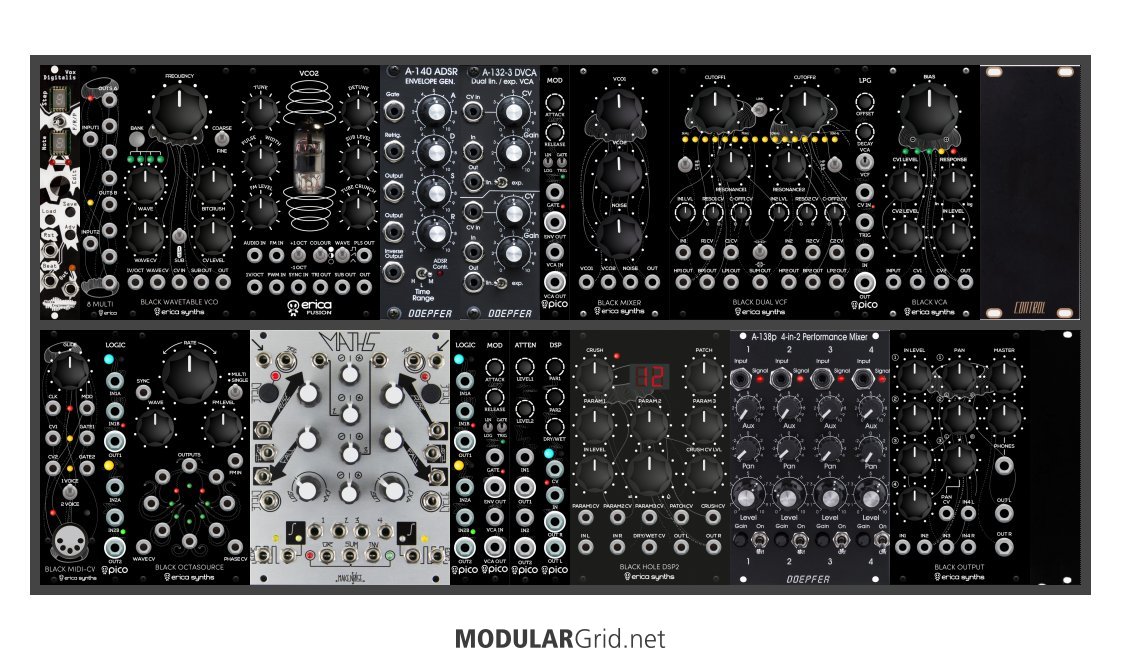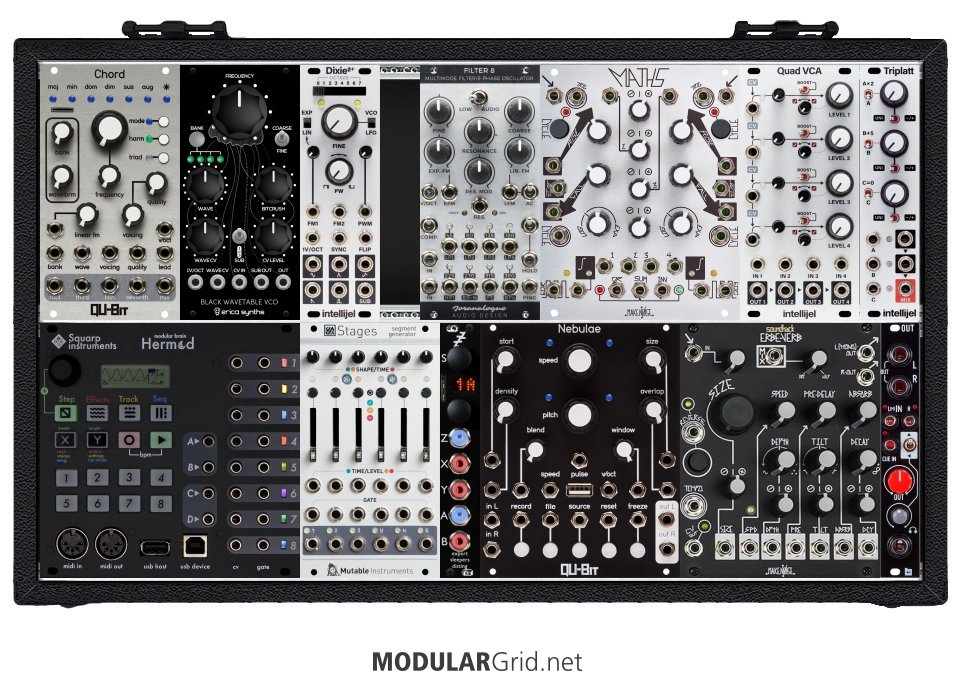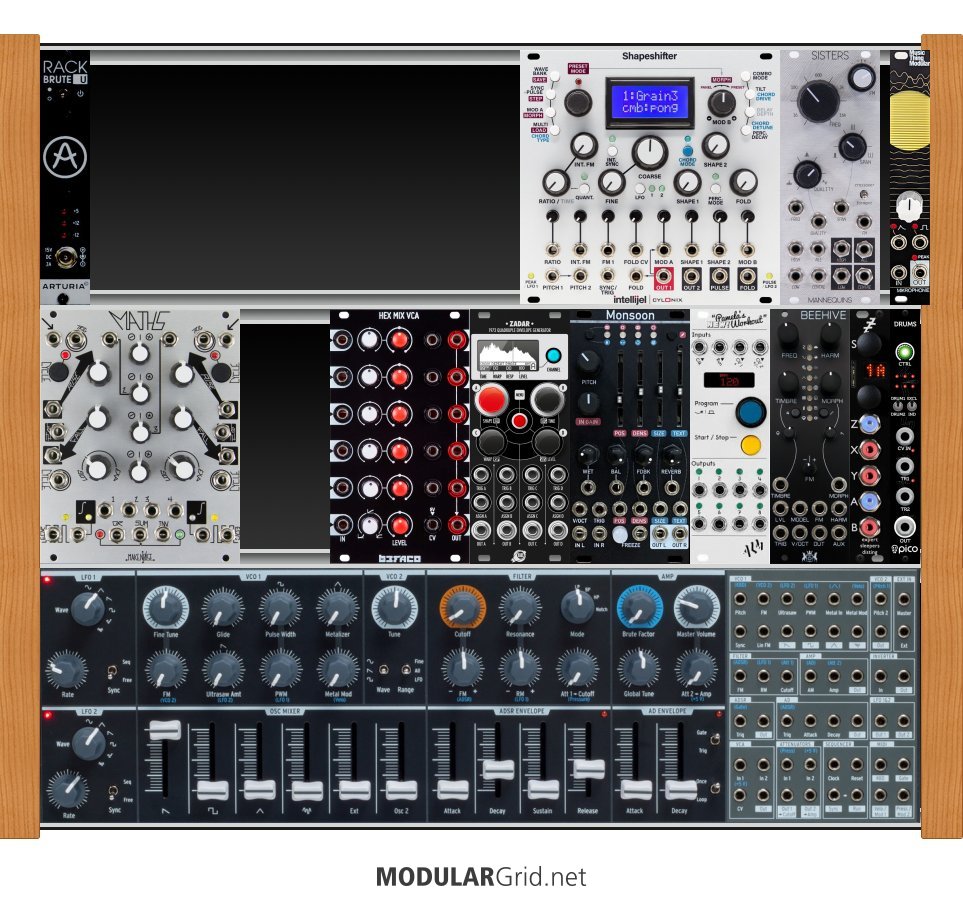Hi Marco,
Interesting rack... with many fancy modules if I may say, never thought so many fit in such a small rack :-) Welcome to the club of modulars and prepare yourself for getting a huge loan with the bank ;-) Haven’t come across a bank who wants to finance my modular “needs” but that might be just me...
Just joking of course, here a few matters you might want to look into it:
I feel your rack is pretty small, sooner or later you will regret to start with such a small case and you have to get yourself another case, so better get started with 3 rows and at least 84 HP, if possible wider. Don’t complain about the costs because just leaving out one or two of those fancy modules should easily get you a bigger case ;-)
To repeat your words: “Many fancy modules” :-) That’s of course nice and fancy but you should also focus on classic and simple modules/functions like LFOs, envelopes, filters, etcetera. And yes most of those fancy modules can do that but that’s an expensive way of doing so. Maths for example can be an ADSR but I wouldn’t use a Maths for just being a simple ADSR, so get yourself some envelopes planned
The above regarding an ADSR is just an example, I think you need to rethink your entire concept to see if the complete system is that what you really require? My advice is to read in this forum in this racks section the replies of senior persons like ronin1973 and lugia, they replied to many cases, similar like yours and my advice is to follow up on their advice :-)
This shouldn’t put you off though but getting the basics right, make sure you got a clear picture what you want with modular is important because it’s just too expensive to make wrong setup mistakes and yes I read your text but I think you have to go a few steps back and think on how to archive your goals with modular, must it be modular? Etcetera
Another thing is that sequencer, the Hermod, that might be a good sequencer yes but is it really the sequencer you need? I am myself rather new into modular as well but almost one third of all the time I have spent into modular and synthesizers went into comparing different sequencers. I bought a few (Tirana II from Xaoc Devices for example and Hikari Analog Sequencer II to name a few) however the ideal sequencer I still haven’t found. Just don’t simply get a sequencer and assume that one will do. Try to get to a dealer and test there a few. Start with a simple sequencer like I did and then consider for yourself what’s important for you for a sequencer? I am still busy with that question and still don’t have a very clear answer to myself about that, it’s very difficult and one shouldn’t under estimate the choice of a right sequencer. Unless of course budget is no issue, then just get the Hermod and try it out :-) And then from there reshape your opinion about a sequencer to see what you need
Or wait for Endorphin.es to come up with their new sequencer Ground Control or Erica Synths with their Black Sequencer, both are not available yet but waiting for it might be worthwhile. I will wait for these two, have them tested at my dealer and then I try to make a decision which sequencer I want and then still I might not know but let’s see.
Good luck with the reading, studying modular materials, basic principles like VCO, LFOs, filters, envelopes, VCAs, etcetera. If you can read German consider this book: Synthesizer from Florian Anwander or just read yourself through the feedbacks people got here on their racks, there is really useful information coming from many people as long as you are open minded for it :-)
Then after that I wish you good luck with your planning, redoing your hopefully bit bigger case and I look forward in seeing your updated case/rack but please take your time, don’t rush it.
Kind regards,
Garfield Modular.
For review reports of Eurorack modules, please refer to https://garfieldmodular.net/ for PDF formatted downloads





